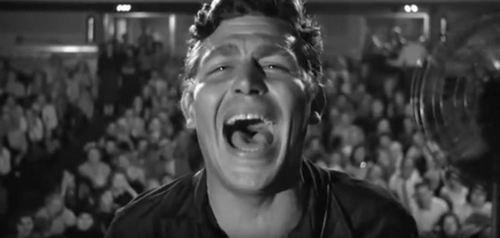
Some mystery should be left in the revelation of character,
just as a great deal of mystery is left in the revelation
of character in life, even one’s own character to himself.
– Tennessee Williams
It is unusual for the author of a play to suddenly, in the midst of the action, turn to the reader, and try to get him to understand something.
Tennessee Williams does it in an unusually lengthy ‘stage direction’ in the second act of Cat on a Hot Tin Roof, his favourite play, holding a plea against revealing everything there is to tell about a character’s personality.
For those who know Cat only as a feature film, there are of course no stage directions. And chances are, when watching the classic 1958 cinema version featuring Paul Newman as Brick and Elisabeth Taylor as his wife Maggie (‘Cat’), you won’t even notice the mystery Williams is so emphatically discussing.
A cinema version is bound to distract anyway – the viewer is at the mercy of the film’s pace and sees (and hears) so many things that subtle hints may escape his attention, whereas on paper such subtleties present themselves one after the other, and a reader can always go back for some rereading.
For me it was Olivia Laing who pointed out Williams’s craving for mystery. In her book about alcoholic authors, A Trip to Echo Spring (2014), she talks at length about why Williams felt the need to interrupt the action in Cat to unfold his theory to the play’s director (and its readers).
There is a reason why Brick, this complex character who with his leg in a plaster cast takes all these ‘trips to Echo Spring’, his favourite whiskey brand, is having this alcohol problem. People don’t booze like that for the fun of it. For the eye of the world, he’s drowning his grief after the suicide of his best friend, Skipper. However Brick refuses to acknowledge the romantic overtones in their friendship – not because they weren’t there (because they were) or because the play is set at a time one couldn’t openly admit to certain feelings (and in the homophobe place 1950s America was, there was no way one could), but because Brick himself is looking the other way. He refuses to see his own proclivity, stubbornly hiding behind how he prefers to see himself. Foundering, like a man who has lost his bearings, he can do only one or the other: face the truth or seek solace in drinking.
The lie that is Cat’s main theme (every character in the play is lying between their teeth) gains an extra dimension in the untold reason for Bricks flight into liquor, giving the irritating drunkard who is getting on everybody’s nerves a lifelike personality as he embodies Williams’s mystery of character theory precisely by not reaching any redeeming insights, by not experiencing some magic reversal, by not doing what everybody inside and outside the play is expecting him to do. Instead, all he can do is be the person he can be.
The result is literature that tells a different tale, and a most personal one at that. It’s about as close to real life as one can get, and how invigorating that is, Williams knew full well when he wrote:
You know, paralysis in a character can be just as significant and just as dramatic as progress, and is also less shop-worn. How about Chekhov?
◊◊◊
Tennessee Williams, Cat on a Hot Tin Roof. 1954. The ‘paralysis’ quote is in Williams’s Selected Letters, Vol. II. 2004.
Olivia Laing, A Trip to Echo Spring. 2014. Next to Williams, Laing discusses five more American authors notorious for the bottle they kept at their writing desk: John Cheever, F. Scott Fitzgerald, Raymond Carver, Ernest Hemingway, and John Berryman.
Still: Poroholma Pool. Finland, 2011.
Read this post in Dutch here.
Advertisements Dit delen:




